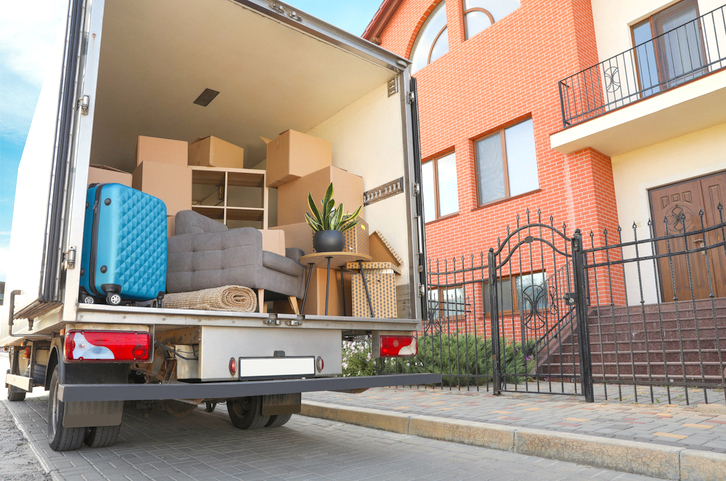Practical Moving Tips To Cut Electricity Costs

Moving your home is both an exciting and demanding process. Whether you’re moving to a new city or just down the street, there’s a lot of factors to consider. One key factor many miss is the effect of seasonal change on electricity prices. Moving during different seasons can significantly affect your electricity bills. Let’s explore how and why this happens and go over practical tips to manage these costs.
Using Moving Services and Their Impact on Electricity Use
Hiring professional moving services can significantly ease the burden of relocating. But even pro movers can impact your electric use in several ways. And that’s true whether you work with a full-service moving company or hire them to assist with the heavier lifting.
Impact on Heating and Cooling Systems
According to the U.S. Energy Information Administration (EIA), an average US home uses about 877 kWh a month. Of course, your usage can vary greatly depending on the season. Generally, homes use more energy for cooling in summer; heating in winter. But movers working in your home can also effect your electric usage. They frequently open and close doors as the move items in and out. As a result, your heating or cooling system may run longer to maintain the set indoor temperature. So, your AC will run more in the summer, and your heating system will run longer in the winter. This extra usage may show up as a spike in your electric company bills.
Lighting Requirements
Movers often require proper lighting to safely move your things. And that’s especially true for areas like basements, attics, or garages where natural light may be limited. Ensuring that these areas are well-lit can raise electric usage during the move. Using energy efficient bulbs in these spaces is a good idea to help cut the impact on your electric bill.
Moving Tips to Reduce Electricity Use
To further limit the impact of moving services on your electricity usage, consider the following:
- Set Your Thermostat: Before the movers arrive, set your thermostat to a lower usage setting. This way your heating and cooling won’t run as often.
- Designate Staging Areas: Use specific areas to stage boxes and furniture. This will help reduce the need light the whole house.
- Schedule Off-Peak Moves: Work with your movers to schedule the move with during off-peak hours. This way, you can take advantage of when electricity rates may be lower.
Seasonal Changes on Electricity Costs
Have you ever noticed how your electricity bill spikes during certain times of the year? During summer, using the AC to keep your home cool can lead to higher electric usage. In winter, the need to heat your home can likewise drive up your electric bills. So, seasonal usage can significantly influence your electricity costs. According to an EIA study, heating and cooling account for about 52% of energy use in a typical U.S. home.
When moving, these seasonal effects can become even more pronounced. Setting up a new home often involves more energy usage. You may use more heating or cooling just to get your household appliances up and running. Understanding these impacts can help you plan better and save on electric costs.
Efficiency of Professional Movers
Opting for a reputable moving company can help you manage some of these electricity-related concerns. For example, experienced movers from a well-established company, 3 Men Movers, often have streamlined processes and are more efficient, which can reduce the amount of time they spend in your home. This efficiency can lessen the strain on your heating or cooling systems and help keep your electricity usage in check.
Moving During Different Seasons
Each season brings its own set of challenges and considerations when it comes to moving and electricity costs. Let’s break down what to expect during different times of the year:
Summer Moves
Summer is one of the most popular times for moving. The weather is usually more pleasant, and there’s no risk of snow or ice making the move more challenging. However, summer heat means you’ll more likely use the AC more often and your power bills might go up. A report by the EIA shows AC can account for up to 12% of a household’s summer energy bill. So, use care when you crank up the AC to keep cool while unpacking and settling in.
Winter Moves
While less common, winter moves come with their challenges. Cold temperatures mean you’ll likely be using your heating system more frequently. Again, these can lead to higher electric costs. The shorter days and longer nights mean you’ll also use more lighting. However, moving during winter can offer cost savings in other areas, such as lower moving company rates. According to the EIA, there might be a 15%–20% rise in household heating expenses throughout the winter.
Tips for Managing Electricity Costs When Moving
No matter when you move, there are several strategies you can use to manage and reduce your electricity costs. Here are some seasonal tips to consider:
Summer Moving Tips
- Use Fans Wisely: Use fans to help circulate air and keep you cool. This can reduce the overall need for AC and lower your electric use.
- Schedule Energy-Intensive Tasks: Do energy-intensive tasks like laundry or running the dishwasher when temperatures are cooler. By shifting these to early morning or late evening, this can help cut your home’s cooing load.
- Seal Your Home: Ensure your new home is well-sealed to prevent cool air escaping. Examine the spaces around windows and doors for gaps, and install weatherstripping if required.
Winter Moving Tips
- Use Space Heaters: Instead of heating the entire house, use space heaters to warm only the rooms you are using. This can be more energy efficient and help lower your electricity bills.
- Optimize Natural Light: Use natural light during the day to minimize your need for artificial lighting. Open curtains and blinds to let in sunlight, which can also provide some warmth.
- Dress in Layers: Cut your need for extra heating by dressing in layers. Plus if you get too warm, you can take off a layer. You can also blankets for extra warmth.
Plan for Moving to Save on Electricity
When moving, careful preparation can really impact how much electricity you use. Here are a few extra tips to use:
- Conduct an Energy Audit: Before moving in, do an energy audit of your new home. This way you can find ways to cut electric use and raise the energy efficiency.
- Upgrade to Energy-Efficient Appliances: By upgrading to EnergyStar rated energy efficient appliances, homes can save about $100-$400 per year on energy bills. Although they can cost more upfront, these save you money on energy over time.
- Set Up a Smart Thermostat: By installing a smart thermostat, you may cut your energy use. You can get more control over your heating and cooling systems by setting them to run only when needed.
- Keep an Eye on Your Usage: During the first few months in your new home, track your electric use. This way you can see trends and adjust to lower your costs.
- Shop electricity plans that best match your usage: If you’re moving to Texas, the best way to save money is with a cheap electricity plan.
Conclusion
Moving might mark an exciting new chapter in your life. But whether it’s in the heat of summer or the chill of winter, it can drastically affect your electricity bills. By knowing how seasons affect your moving costs you can plan to use these easy ways to avoid most problems. That way, you’ll keep your expenses lower. To be sure,planning and foresight can go a long way in ensuring your transition is smooth and energy-efficient. So, next time you plan a move, remember these tips and enjoy your new home without the added stress of high electricity bills.

